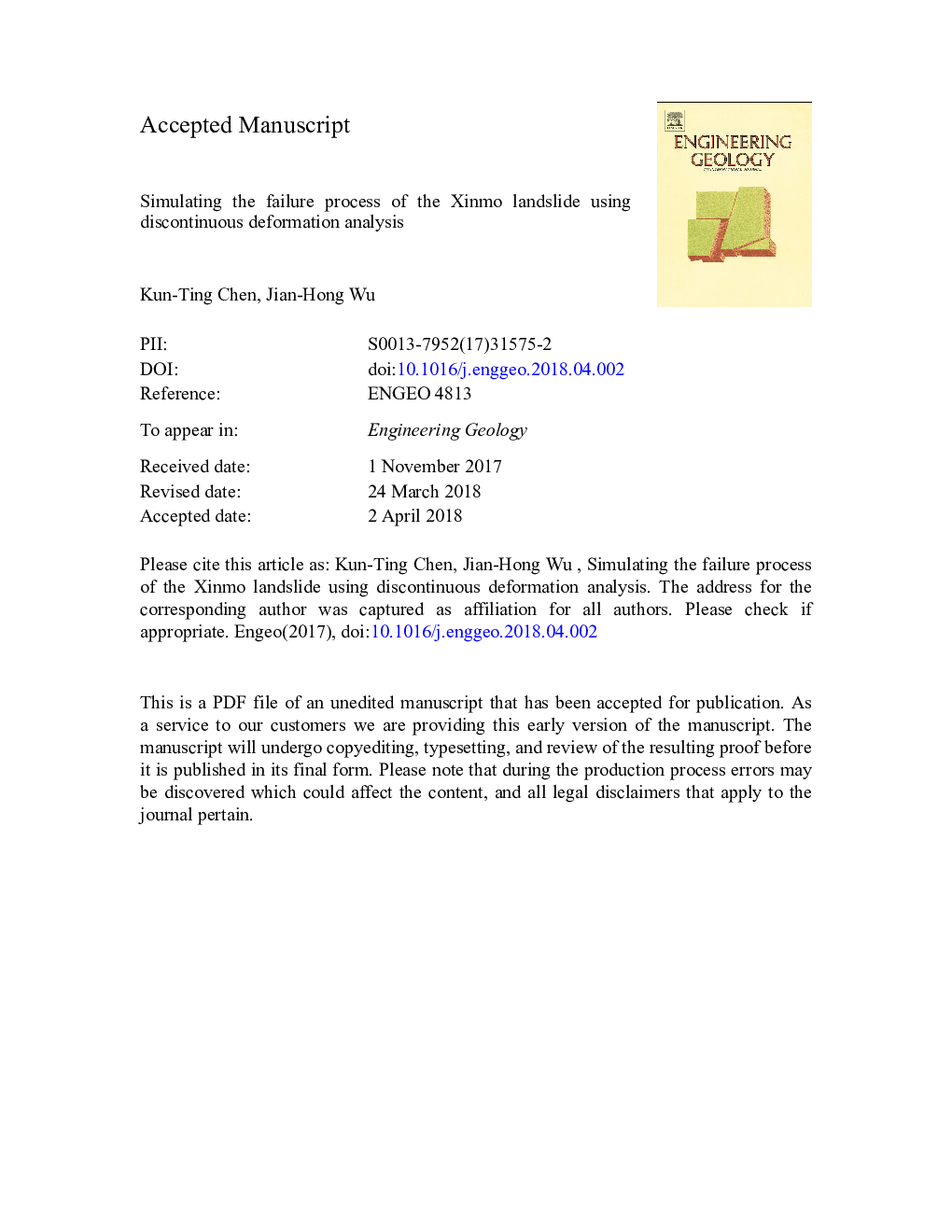| Article ID | Journal | Published Year | Pages | File Type |
|---|---|---|---|---|
| 8915891 | Engineering Geology | 2018 | 60 Pages |
Abstract
The Xinmo landslide slope in Sichuan, China, was stable during the intensive Wenchuan Earthquake in 2008 but failed on June 24, 2017. Landslide debris buried Xinmo Village and blocked the Songpinggou River at the slope toe. This study aims to clarify the post-failure behavior of the landslide using two-dimensional discontinuous deformation analysis (2D DDA). The simulation results provide comprehensive information on the initiation and the evolution of the landslide. The failure process determined by the DDA correlates well with the seismic signal analysis results. In addition, the location of the calculated rock deposit is similar to that shown by the topographic map after the landslide. The maximum rock velocity in the landslide is 65.4â¯m/s. Therefore, the impacts of the high-velocity blocks and the buildings in Xinmo Village must be considered to simulate the burial of Xinmo Village by rocks and the transport of additional rocks across the Songpinggou River. This Xinmo landslide study demonstrates that the DDA accurately simulates the post-failure behavior and determines the impact area of a landslide with complicated failure processes and topography.
Related Topics
Physical Sciences and Engineering
Earth and Planetary Sciences
Geotechnical Engineering and Engineering Geology
Authors
Kun-Ting Chen, Jian-Hong Wu,
